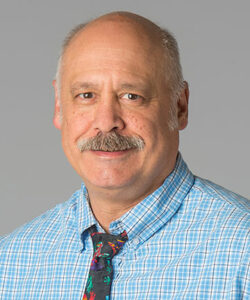
Catching up with: Pearson Packaging Systems
Automated system maker expects growth rebound
_web.jpg?t=1743064819&width=791)
Pearson Packaging Systems CEO Michael Senske says the company has accelerated the adoption of robotics in recent years.
| Mike McLeanSpokane-based Pearson Packaging Systems anticipates a sales surge this year following three years of steady, but below-forecast sales due to delayed effects of the COVID-19 pandemic, says company CEO Michael Senske.
While Senske describes annual sales in 2022 through 2024 as flat, he says orders for new systems improved late last year and early this year.
Pearson Packaging builds machines that erect boxes and pack, seal, and palletize products. The company sells equipment worldwide to food, beverage, and personal-care products manufacturers.
In recent years, Pearson Packaging has been accelerating the adoption of robotic equipment that increases efficiency and reduces labor costs to operate its systems.
“Customers are really starting to order a lot of equipment again. We think we’re going to have a tremendous first quarter,” he says. “We expect overall revenue to be up about 15% in 2025, and we believe profitability will increase significantly beyond that.”
When the Journal interviewed Senske in May 2020, early in the implementation of COVID-19-related restrictions, Pearson Packaging hadn’t begun to experience the supply-chain issues that were hampering some other manufacturers. But supply-chain disruptions caught up to the company in mid-2021, and it only recently has recovered fully from them, he says.
Senske says 2024 was a slow year for the entire packaging industry.
“Our order book for new machines and systems was about 20% less than forecast,” he says. “That being said, our aftermarket group, which provides parts and rebuilds and retrofits existing machinery, had the best year in the history of the company.”
He says the upswing in the aftermarket business balanced out the lower-than-anticipated revenue from new systems sales.
While working through supply-chain issues, Pearson Packaging shut down its Flexicell Inc. facility in Virginia and relocated its technology to the flagship Spokane plant.
“We consolidated here because we had excess capacity here,” Senske says.
The company currently has about 225 employees, 175 of whom are based in the Spokane plant.
“We have the other 50 people around the rest of the country,” he says. “They include sales, application engineers, and service technicians.”
When Pearson Packaging acquired Flexicell in 2018, total employment peaked at 300.
Senske says Flexicell, a pioneer in the application of robotics in packaging systems, helped drive changes in the makeup of Pearson Packaging’s staff.
“It requires fewer individuals and different types of people,” he says. “You don’t need as many assembly personnel when you’re building robotic systems, but there’s a higher emphasis on engineering capability and talent in both mechanical and controls engineering.”
The 110,000-square-foot Pearson Packaging plant at 8120 W. Sunset Highway consists of 90,000 square feet of production space and 20,000 square feet of office space.
To help ensure against future supply chain disruptions, Pearson Packaging has increased its inventory and has asked supply-chain partners to ensure they have more depth in their supplies, Senske says.
“We’re strategically holding certain types of inventory that we previously didn’t,” he says. “I’m happy to say that we’re back to our pre-pandemic lead times now.”
Since moving Flexicell operations to the Spokane plant, Pearson Packaging has increased assembly bays and its production capacity by 10% to 15%, Senske says.
The company also added a mezzanine level to the facility to store inventory.
“Instead of taking space on the floor, we kind of built up so that we can handle the higher volumes,” he says.
Pearson Packaging sources its robotic equipment from Japanese company Fanuc.
He describes the Fanuc component of the robotic system as an arm with joints analogous to a shoulder, an elbow, and a wrist.
“Our mechanical engineers design the end-of-arm tooling—the hand that manipulates the product—and then our programmers write the code that controls the machine or system,” he says.
The end-of-arm tooling can be modified to meet customers’ specifications and changes in products or packaging.
Pearson Packaging’s customers are migrating to robotics because a machine can operate 110,000 hours between major breakdowns, Senske says.
“You could essentially run a robot 24/7 for about a decade before you have a catastrophic failure, as long as it’s properly maintained,” he says.
Senske adds that for the first time since the pandemic, Pearson Packaging is looking at acquiring a couple of smaller companies that would provide additional technology.
Pearson Packaging also has launched within the last two years what Senske calls its consumables division, through which it sells glue and tape specifically formulated for its case erectors and tray formers.
“It’s still a very small part of the business, but it’s really growing,” he says. “We expect about 100% growth in consumables sales this year.”
Senske was named CEO in 2003, taking the helm of the company his mother Pam Senske had piloted for 11 years, and that his grandfather Reinhold Albert “Lefty” Pearson founded as R.A. Pearson Co., in 1955.





![Brad head shot[1] web](https://www.spokanejournal.com/ext/resources/2025/03/10/thumb/Brad-Head-Shot[1]_web.jpg?1741642753)